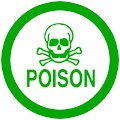 |
| RATING: EGO BOOSTER |
Health groups, legislators and the FDA say e-cigarette liquids with flavors such as chocolate, grape and bubble gum are meant to entice youth into using the product. Of course, adult smokers are not interested in such sweet flavors.
"Electronic cigarettes...are manufactured in flavors meant to appeal to young people, such as bubblegum and chocolate." -New York Assembly Member Linda B. Rosenthal
"Electronic cigarettes have been marketed in youth-friendly candy and fruit flavors including bubblegum, cookies and cream, and cola." - Campaign for Tobacco-Free Kids
"Flavored regular cigarettes promote youth initiation and help young occasional smokers to become daily smokers....Young people may be attracted to [e-cigarettes] due to their novelty, safety claims and the av- availability of the products in a variety of fruit, candy, cola and chocolate flavors." - Food and Drug Administration
ANTZ CHECK:
The highly-publicized ban on flavored tobacco cigarettes and the fact that this claim is being made by trusted organizations and public figures gives it a ring of truth. However, the facts and simple logic don't support the theory that the availability of candy-like flavors would attract youth smokers away from traditional cigarettes or entice non-smoking youth. Nor is there any evidence to support the allegation that e-cigarette companies and retailers have any interest in creating a youth market:
1) There has never been clear evidence to support the claim that even flavored tobacco cigarettes had any significant impact on youth smoking initiation. Research shows that the most popular cigarette brands among youth are Marlboro, Camel, and Newport, not "candy flavored" cigarettes. The overall market share of flavored cigarettes among youth smokers was less than 0.1%.
2) Logically, if a teenager wants to smoke then traditional cigarettes are far easier to obtain, much more affordable and have a "cool factor" that e-cigarettes lack. If a child wants something "bubble gum-flavored," then real bubble gum would be far more appealing than an expensive, flavored e-cigarette.
3) Non-tobacco e-cigarette flavors appear to be very popular with adult smokers who don't find the artificial tobacco flavors appealing or find that non-tobacco flavors make the transition away from the taste of traditional tobacco products much easier.
4) In a survey conducted by CASAA, 78% of the respondents who indicated that they exclusively used fruit, beverage and/or candy flavored liquid were over age 30.
5) There are over 45 million smokers in the United States. With such a huge, pre-existing market, e-cigarette manufacturers have no real motive to target non-smokers or youth. Additionally, a significant number of U.S. e-cigarette companies and stores are run by former smokers who not only use the devices themselves, but who also still harbor anamosity towards the tobacco industry and its "shady" tactics of the past. The last thing these folks would want to do is get children addicted to smoking.
6) ANTZ surveys suggests that while younger adult smokers are more likely to try electronic cigarettes, the data collected did not include the flavors they used nor information about adolescent and teen use.
7) If adult smokers do not like fruit and candy flavors, then why do FDA-approved nicotine gums and lozenges come in flavors such as mint, cherry, orange, cinnamon, cappuccino, "fruit chill" and java?
CONCLUSION:
There is no evidence to support the claim that the flavors available for e-cigarettes will encourage children to try electronic cigarettes or that companies are targeting children, but the ANTZ expect that you will believe their "authoritative opinion" over common sense and facts. I rate this lie to be an Ego Booster.
ANTZ Check Lie icons:
 A Toxic Shocker: Using negative comparisons and analogy to make something sound more dangerous than it really is. Often uses scary-sounding chemical names.
A Toxic Shocker: Using negative comparisons and analogy to make something sound more dangerous than it really is. Often uses scary-sounding chemical names.
A B*** S*** Lie: Absolutely untrue, no evidence whatsoever to support the claim.

A Truth Twister: Presenting facts in such a way that something that could just as easily be seen as positive is presented only as negative or a careful use of specific words to change the focus of a discussion.
 An Ego Booster: Relying on an authoritative or respected reputation to give the impression that an opinion or theory is a known fact. You must believe what they say solely because they are someone "important."
An Ego Booster: Relying on an authoritative or respected reputation to give the impression that an opinion or theory is a known fact. You must believe what they say solely because they are someone "important."NEXT...ANTZ CHECK #3: Not a safe alternative to smoking
No comments:
Post a Comment